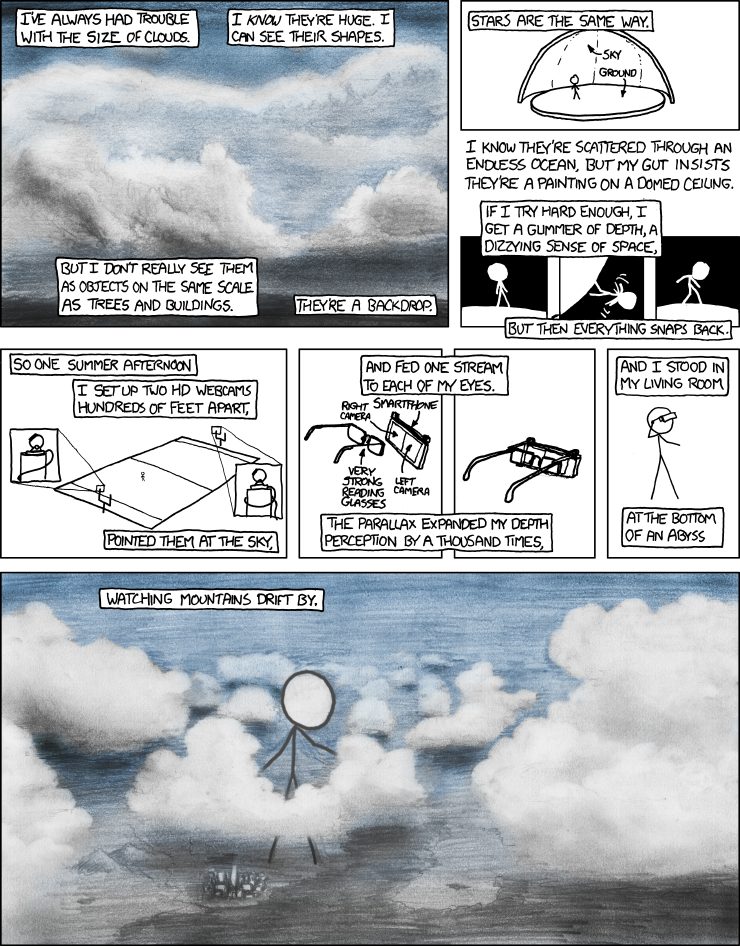Sure, some nice progress was made in 2011 in HMDs:
- Higher resolution OLEDs became part of a new generation of lighter, brighter HMDs such as the zSight.
- Low-latency wireless video is moving into mainstream. I believe it will become a common accessory to HMDs, much like head trackers.
- In general, companies like Sensics continued to improve their optics designs, packaging, level of integration and features of professional HMDs.
Having said that, I believe that what's truly going to impact HMDs - the professional models - and VR goggles - the consumer models in 2012 were recent improvements made outside the direct HMD realm:
- Lower-cost micro-displays of 'good enough' resolution are becoming available. Once 720P displays are available for ~50$, the economics of goggles change, because displays have historically been a key cost driver for the HMD/goggle cost. What's the difference between a $10K HMD and a $15K HMD? $5K, of course, but otherwise there is no big difference in market penetration. It's hard to see why a $10K price would suddenly cause cause skyrocketing quantities whereas a $15K HMD did not. However, the difference between a $1K goggle and a $6K HMD, or better yet a $500 goggle to a $6K HMD would be huge as the $500 product would suddenly allow an entirely new group of users and entirely new class of goggle applications.
- Motion tracking is improving - both inside and outside the HMD. Driven by new generations of cell phones, tablets and game controllers, embedded motion trackers with 6 degrees of freedom (X/Y/Z, yaw/pitch/roll) are becoming good enough and inexpensive enough to make it into practically every product. Not only does this this make them an automatic add-on to products, but their increased quantity in the market opens up new ideas and new development techniques to use them. Outside the HMD, the success of the Wii and the Kinect made it obvious how powerful gesture-based and natural interaction are, and these developments will soon make it into goggles, such as the new SmartGoggles offering.
- Just like micro-displays are experiencing their version of Moore's law, embedded CPUs are continuing their march. New phones and tablets these days could have 1.5 GHz dual-core processors with embedded graphics and 3D accelerators. This is a very powerful computing platform. Because they are embedded in phones and tablets, these processors have to be lower-cost, power-efficient and small - all a perfect fit to embedding them into or alongside goggles. At the same time, having an open operating system like Android allows support of new hardware platforms as well as a nearly-endless supply of apps and content to consume.
- The improvements in processing power as well as cost and resolution of embedded cameras have given a huge boost to augmented reality applications. Driven by phones and tablets, both the applications and the knowledge gathered while building them will become very useful for goggles.
All taken together, a new generation of goggles will appear. If the typical goggle in 2010 was a lens, a micro-display and a video cable, it will evolve to be much more in 2012/2013. Combine on-board processing, embedded motion tracking for head, hands and others, augmented reality power and lower-cost micro-displays, and the mindless HMD will now morph into something between a fully-fledged independent computing and user interface platform to at least a highly-sophisticated display and virtual reality co-processor for phones, tablets, consoles or PCs.
Sure, there will still be a market for traditional HMDs just like there is still a market for flip phones. Sometimes, users don't need the sophistication of the Smart Phone, or don't want to pay for the data plan or have some ruggedization requirement that can only be satisfied by a flip-phone. Similarly, a special defense packaging, an ultra-low cost or some other requirement will continue to keep traditional HMDs in the market for years. However, I believe true growth will come from the smarter goggles that will take advantage of the above technologies to create a more complete and compelling user experience.
Happy Near Year!


















